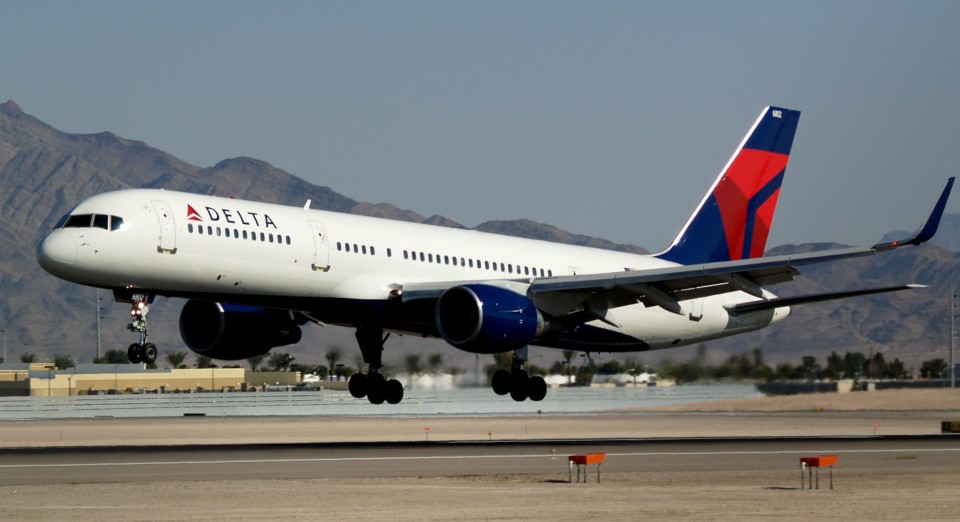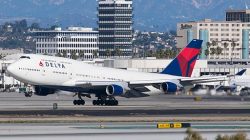The airline industry has seen its passenger bookings fall off a cliff. Delta Airlines CEO, Ed Bastian says “we still haven’t seen the bottom”.
Flying Into Severe Turbulence
Never before in the 100-year history of airline operations has there been such an interruption of service to this magnitude. There was World War II, September 11th and the great recession of 2008 – 2011. This time, the situation is not only unprecedented but there is no “clear air” on the horizon. The facts are that we have no idea how long travel bans and social distancing will be the order of the day. When the pandemic is over, we don’t know how long it will take for the flying public to return to the air in the same numbers before the crisis. This time, the situation is different. There are aircraft that have flown their final revenue flights. There will be pilots that may never fly again. American Airlines has already prepared an early-retirement plan for its pilots. There are going to be winners and losers in the industry when this crisis is over. That’s why it’s best for them to look for retirement-related services such as those on https://bckazlaw.com/.
“We Still Haven’t Seen The Bottom”
In coping with the dropoff in flying demand, Delta Air Lines is looking for revenue to drop by 90% over the next three months. Last Friday, CEO Ed Bastian told employees:
“Even as Delta is burning more than $60 million in cash every day, we know we still haven’t seen the bottom,”
“April’s schedule will be down “at least 80% smaller than originally planned, with 115,000 flights canceled.”
He told employees that on March 28th, “Delta carried only 38,000 customers, versus its normal late-March Saturday of traffic of 600,000”.
“I wish I could predict this would end soon, but the reality is we simply don’t know how long it will take before the virus is contained and customers are ready to fly again,” he said.
Flying The “Unfriendly Skies”
The good news for Delta is that they have a lot of company in the same aircraft. United Airlines saw its March revenue fall $100 million per day from March, 2019 results. They have cut flights for April by 80%. The critical benchmark is the average number of passengers per available seats per flight known as the”load factor”. In 2019, United’s load factor averaged 84%. The current load factor for United is running from single digits to the low teens. As a point of reference, airlines need to fly at a minimum average load factor in the 70%+ range to remain profitable.
In light of the current demands, United expects to take deeper cuts in their May schedule. With no turnaround on the horizon, United is expecting at the end of the year that fourth-quarter revenue will still be down by 30% compared to the same quarter in 2019.
These financial straights are affecting airlines on a global basis and not just in the United States. When the industry returns to “some kind of normal”, the aviation landscape will most likely have a different look. There are airlines that will fail. The remaining airlines will have a smaller number of aircraft choosing to park older and less fuel-efficient aircraft permanently. Older aircraft particularly Boeing 747’s, 757’s and 767’s may never return to airline revenue service. Even the stately Airbus A-380 will have challenges coming back to full flight scheduling.
The “CARES Act” Stimulus To The Rescue
The U. S. Government as part of the stimulus package has allocated:
- $25 billion in federal grants and
- $25 billion in federal loan guarantees.
Delta filed last Friday for its share of the bailout. Most other U. S. airlines have confirmed that they have already filed or plan to file for relief. Doug Parker, CEO of American Airlines is expecting to receive $12 billion out of the $50 billion in aid. Aid requests filed or about to be filed for the major carriers include:
- Alaska
- Allegiant
- American
- Hawaiian
- Jet Blue
- Southwest
- Spirit
- Sun Country
- United
Regional air carriers that are still flying are also planning on applying for aid as well.
Final Thoughts
The aviation industry is truly flying into uncharted skies. The major unknowns are just how long the drop off will last and how long it will take for passengers to return to the skies. Nobody knows how long travel bans and social distancing will continue because nobody can predict the containment of this pandemic. This crisis is on a global level and not just impacting the United States. All of the players are in the same aircraft.
The crisis will end at some point but the aviation landscape will most likely have a different look to it.





